As you walk down 32nd street in New York City, the first indication that you’re in Koreatown is probably that the signs aren’t in English anymore. Then, you notice the restaurants, bars, and karaoke clubs. And the plight of the foodie begins.
As much as you want to, you can’t possibly try everything. Even if your stomach could physically handle it, your wallet probably couldn’t. So what’s the best option? Where do you begin? The answer: Food Gallery 32.
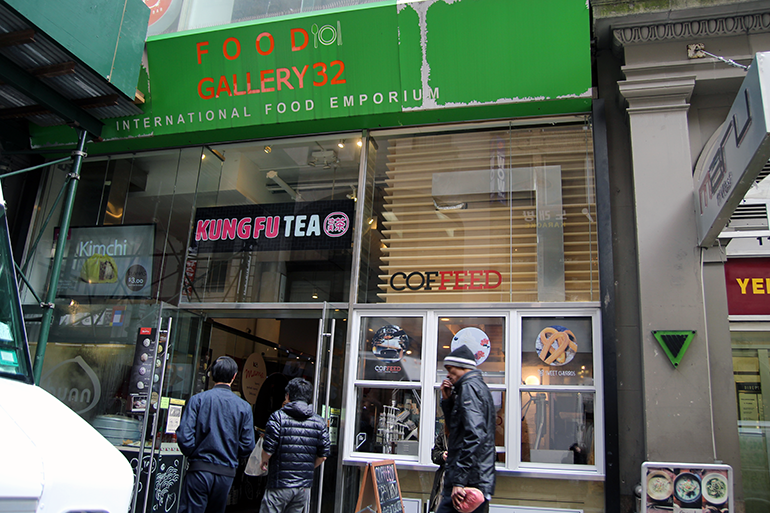
Photo by Shannon Cheung
A 3-story food court: hearing about it is enough to make your heart race, so when you actually do walk in, make sure you remember to breathe — inhale, exhale — because it’s about to get serious. Nine vendors. One of you. How is this supposed to work?
Well, it can’t. So you make sure you bring along friends to act on the ulterior motive of being able to try more things… What? I mean, so you can spend a beautiful day in the city with your friends.
As you make your way around the food court and (probably 500 years later) come to a decision, it’s time to order. The prices are college-student-budget-approved. Of course, prices will vary from vendor to vendor, but generally, the prices tend to waver around $10, sometimes a few dollars less or more.
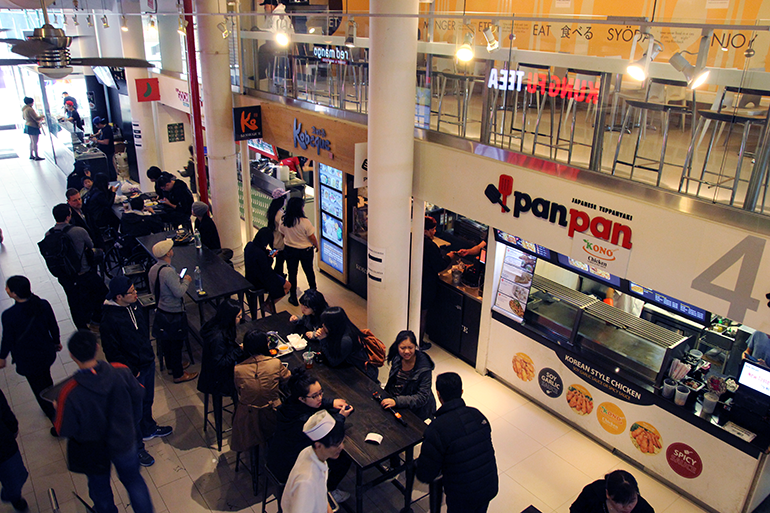
Photo by Shannon Cheung
Alright, you’ve ordered, and they’ve given you your pager. Now you wait. After what feels like three lifetimes, it lights up and buzzes furiously. The moment of truth arrives as you retrieve your food. Just kidding. There’s something very crucial that you’re forgetting. You know it. Your friends know it. They already know what’s coming. It’s what happens when you’re friends with a foodie.
You pull out your phone and take pictures of everything from every angle possible. You swat their hands and utensils away when they try to sneak a bite. You’re on a mission to preserve the beauty that is food and no one will get in your way (I’d like to use this space here to thank my friends for cooperating with me).
Without further ado, the actual moment of truth.
Bulgoki Bibimbap BBQ Rice Bowl from Kobeque ($11.99)
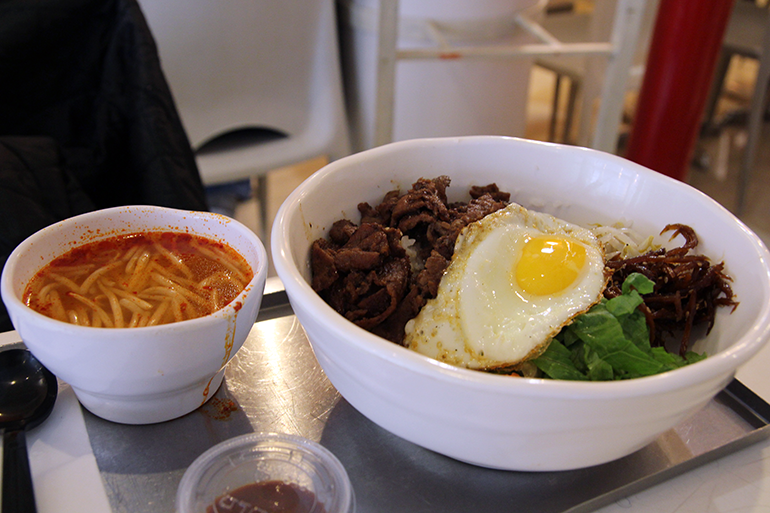
Photo by Shannon Cheung
Bibimbap is a signature Korean dish, served as a bowl of rice topped with vegetables such as spinach, bean sprouts, daikon (a type of radish), gochuchang (a chili pepper paste), and soy sauce. The dish is finished with a raw or fried egg and some meat. In this case, my friend opted for bulgoki, or grilled marinated beef.
Sounds too good to wait for a trip to the city? Try your hand at making your own bibimbap.
Spicy Pork BBQ Rice Platter from Kobeque ($11.99)
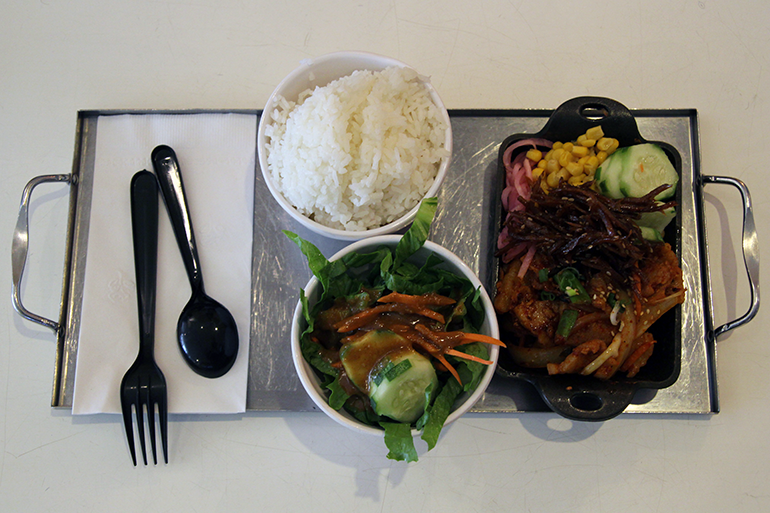
Photo by Shannon Cheung
This platter included a heaping bowl of rice, a salad, and spicy pork coupled with a variety of vegetables.
Korean Pork Miso Ramen from Noodle 32 ($8.95)
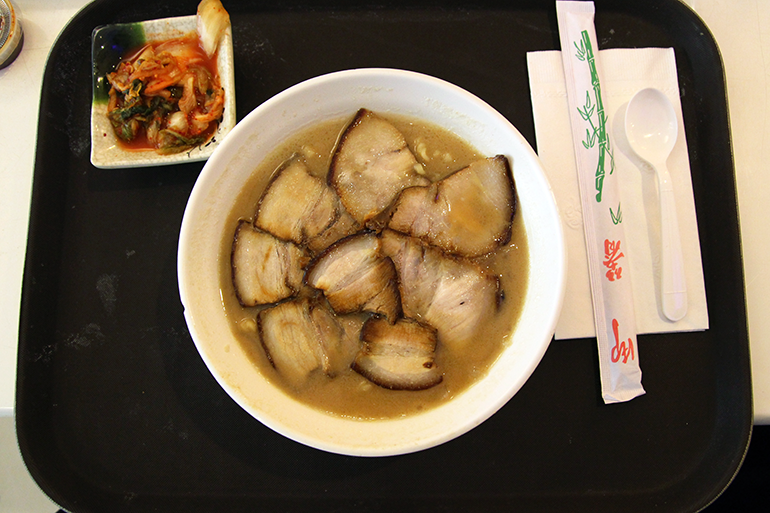
Photo by Shannon Cheung
Ramen always has me feeling some type of way. Served with a side of kimchi (spicy Korean side dish of fermented vegetables), this dish featured a bowl of ramen topped with slices of pork. The steamy soup had the perfect flavor, the noodles were the perfect texture, and the tender pork soaked up the broth really nicely. While the infamous instant ramen back in our dorms can’t match up to this, you can still find ways to up your ramen game.
Fish Cake Soup and Tteotboki from Gochuchang ($9)
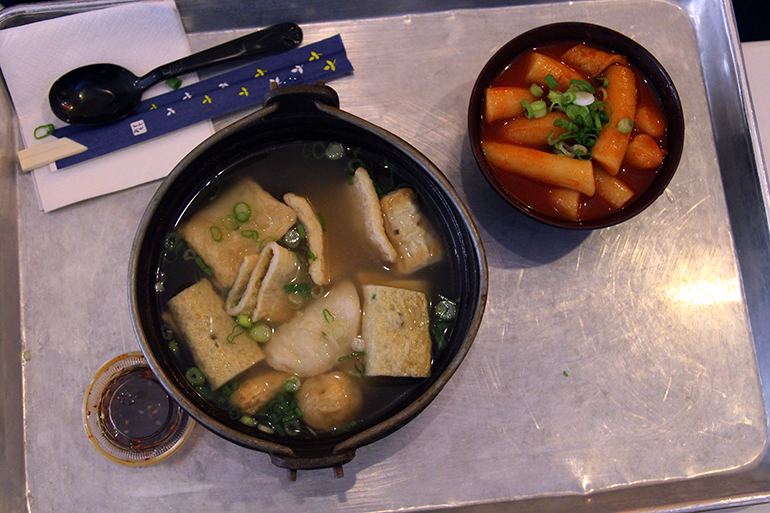
Photo by Shannon Cheung
Set D from the menu of Gochuchang comprised of a bowl of fish cake soup and tteotboki, or spicy rice cakes. Both are common street foods in Korea because of how well they complement one another. The light soup balances the starchiness of the hot and spicy rice cakes.
Plain Ramen + California Roll from Noodle 32 ($6.50 + $2.50)
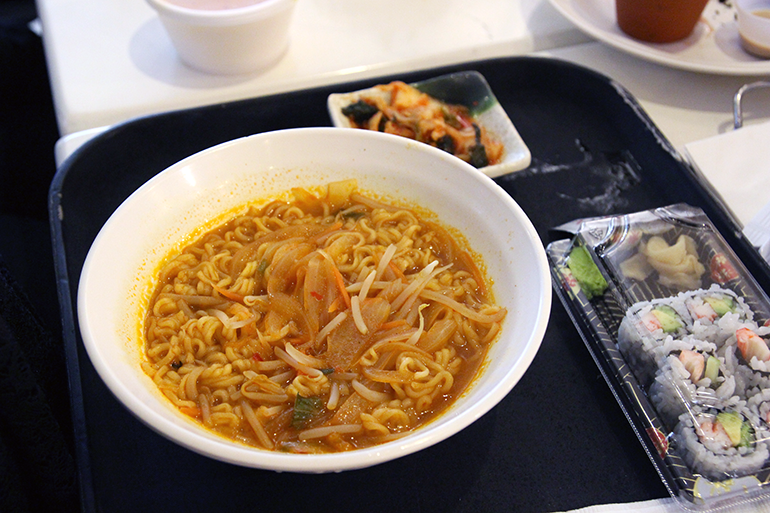
Photo by Shannon Cheung
Ramen topped with vegetables and a California roll on the side. Tip from the lucky diner: “If you think you can eat the whole thing in one sitting, don’t wear constricting bottoms.”
Pork BBQ Rice Bowl from Kobeque ($9.99)
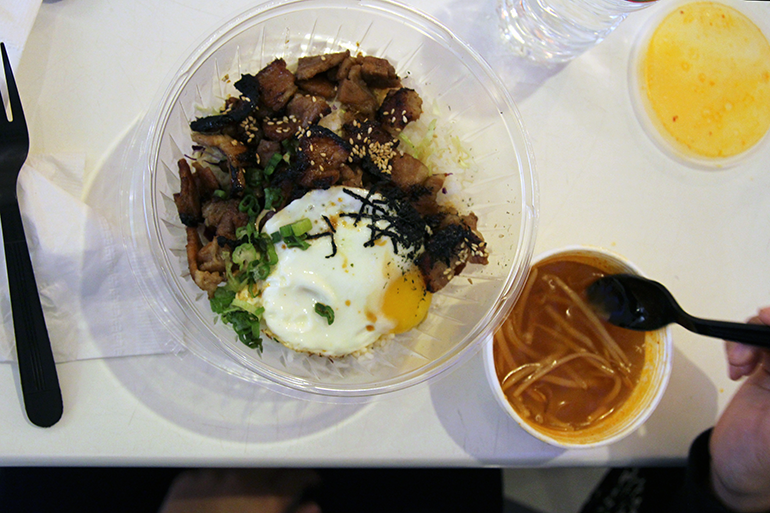
Photo by Shannon Cheung
A bowl of warm rice topped with scallions, barbecued pork, and a sunny-side-up egg to light up your day.
The Harvest from Spot Dessert Bar ($9.15)
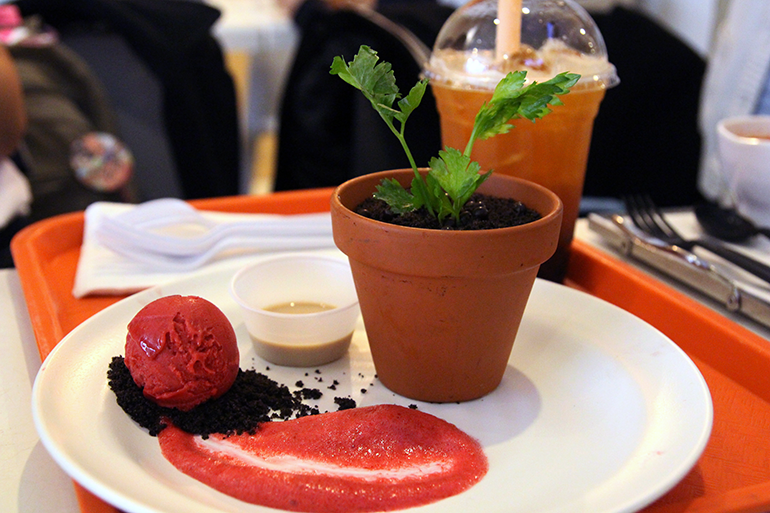
Photo by Shannon Cheung
Spot Dessert Bar sells decadent dessert tapas for you to share with your friends (or eat all on your own). The prices tend to be a little higher, though. One of my friends ordered this signature dessert called The Harvest. We all couldn’t get over how adorable it was. The pot contains layers of berries, soft cheesecake, and meringue kisses; it’s served with a scoop of raspberry sorbet and black rose milk tea.
Taiyaki from Mama ($3.00)
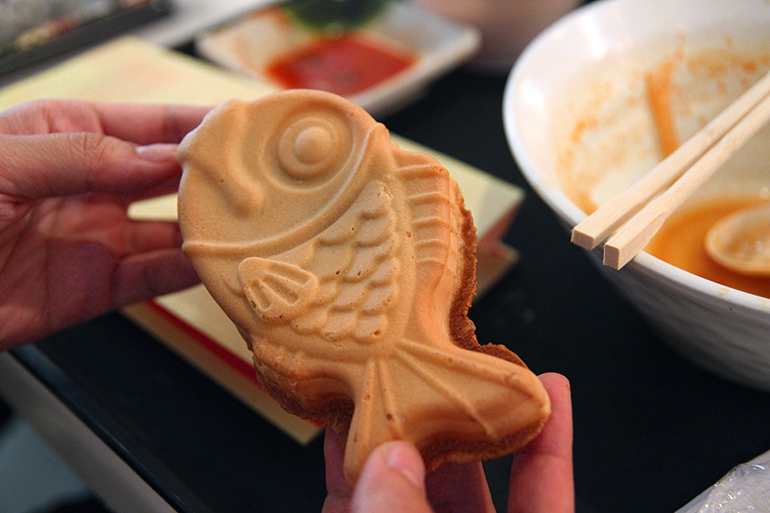
Photo by Shannon Cheung
A cheaper dessert alternative is offered from Mama on the first floor, where they sell taiyaki, Japanese fish-shaped cake commonly filled with red bean paste. Here, they also offer taiyaki filled with cream cheese. Other options from are the croissant taiyaki (with custard, cream cheese, or strawberry filling) and delimanjoo (Korean custard cakes).
Bubble Tea from Kung Fu Tea ($4.00-$5.00)
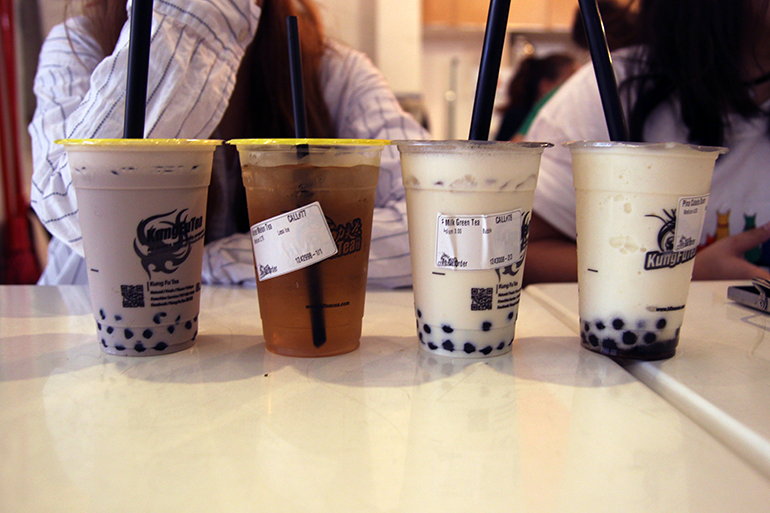
Photo by Shannon Cheung
As another dessert option, Food Gallery 32 has Kung Fu Tea. It’s not cake or ice cream, but it’s still refreshingly sweet. My go-to bubble tea flavor is taro. Taro is a starchy root vegetable, but taro-flavored deserts taste more like a sweet and nutty vanilla.
Pictured above, from left to right, are: taro bubble tea, winter melon tea, milk green tea with bubbles, and pina colada slush with bubbles.
Bubble tea is known for how easily you can customize your drink. At Kung Fu Tea, you can adjust the amount of ice and sugar in your drink, as well as choose from a plethora of toppings aside from bubbles. Make sure you read up on how toppings can make your bubble tea way better than it already is.
And there you have it — your inner foodie satiated, at least for now (mostly because you can’t physically fit any more food in your body).


